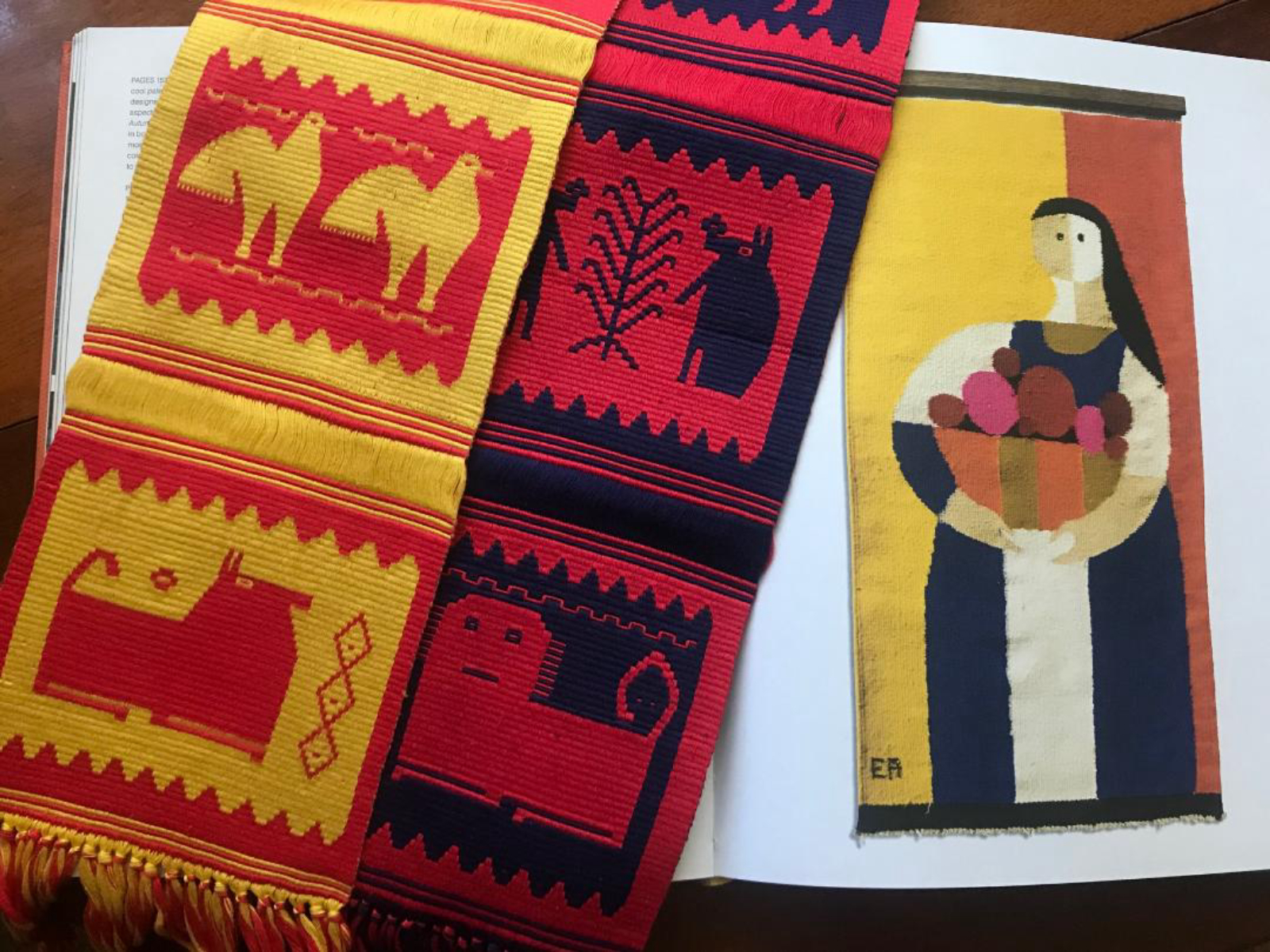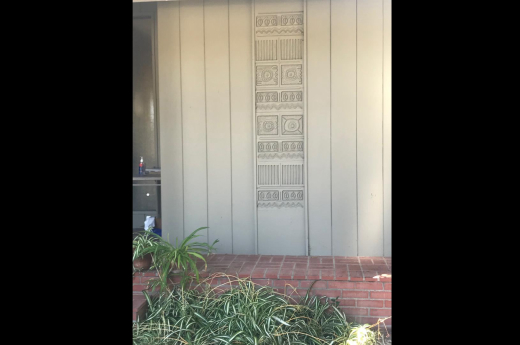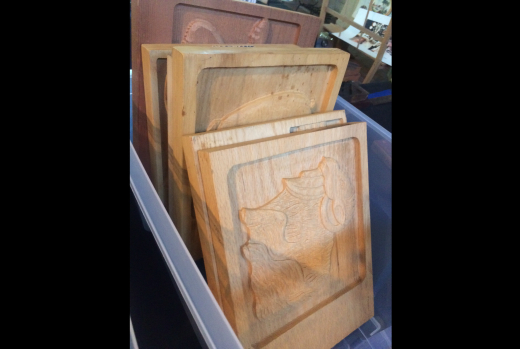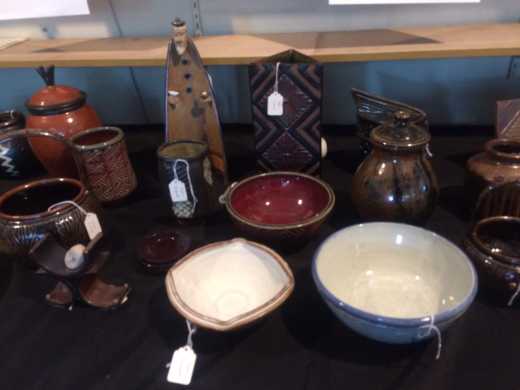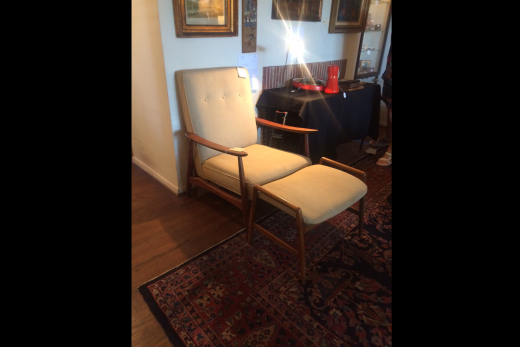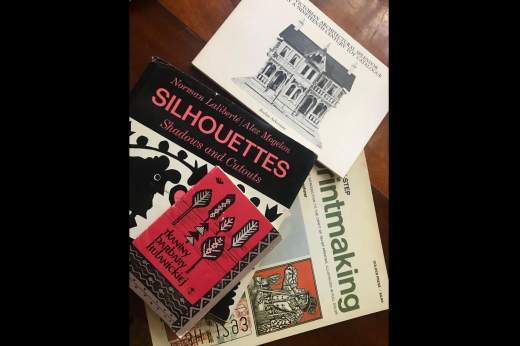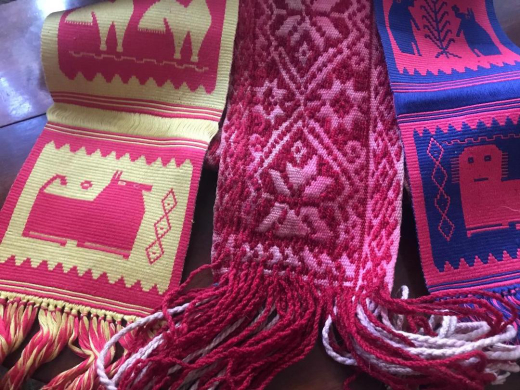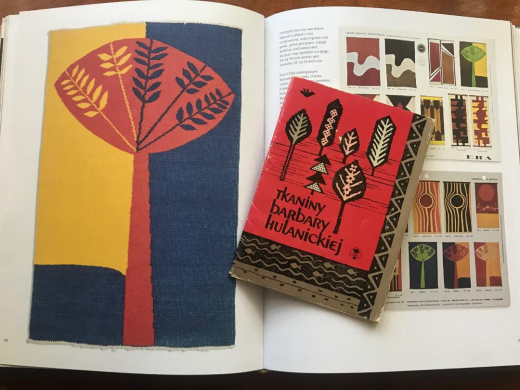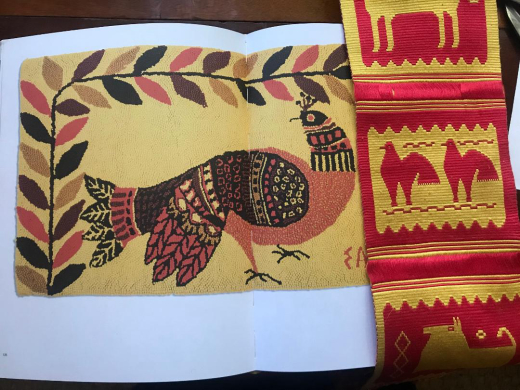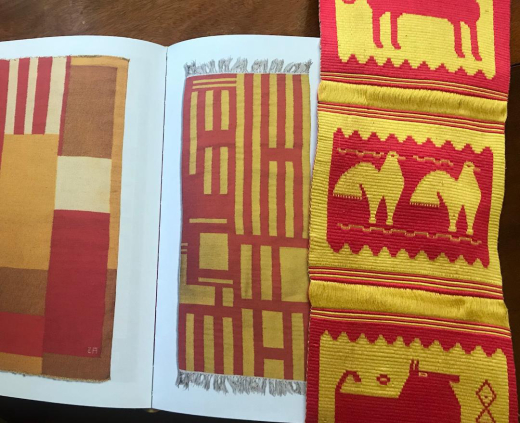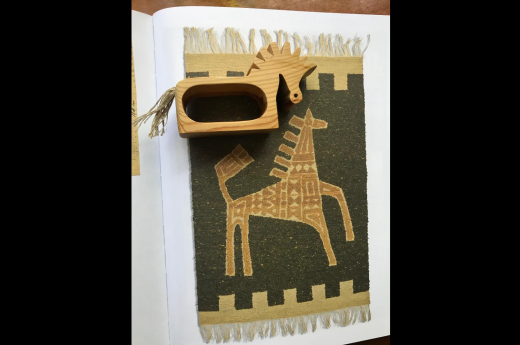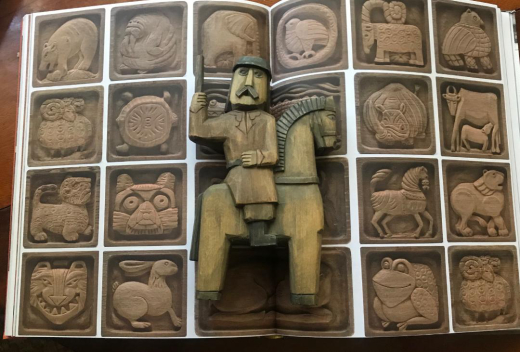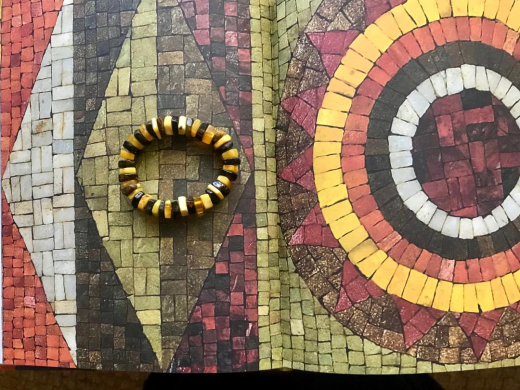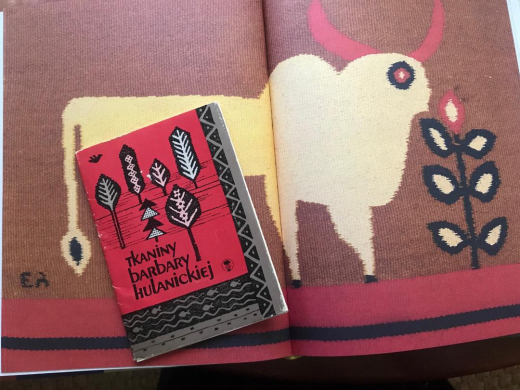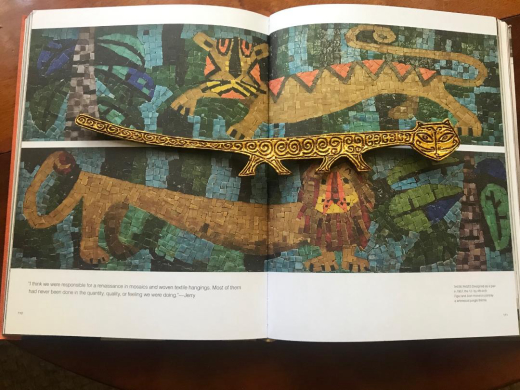On August 7, 2020, I went to the estate sale at the former home of mid century American designers, Evelyn and Jerome Ackerman. I first became aware of the husband and wife design team about ten years ago when I visited Meditation Mount in Ojai, CA and saw Evelyn’s 1967 carved wooden door on the meditation hall, each panel depicting a different sign of the zodiac. In 2011, I saw Evelyn Ackerman’s “Ellipses” glass mosaic panel from 1958 at the exhibition “California Design - Living in a Modern Way” at the Los Angeles County Museum of Art, part of the Getty’s Pacific Standard Time initiative. A few years ago I bought the marvelous book, Hand-in-Hand: Ceramics, mosaics, tapestries and woodcarvings by the California Mid-Century Designers Evelyn and Jerome Ackerman (2014. Chavkin, Dan and Thackaberry, Lisa. New York: Pointed Leaf Press.)
I had not been to an estate sale in many months, in fact I had barely left the house. I can’t say I wasn’t nervous but I knew this would be special, so on the first day of the three-day sale, I donned my mask, face shield and hand sanitizer and stood in a socially distant line for 2.5 hours. The estate sale company was only letting a few people in at a time. Safety precautions were in place and being carefully adhered to. I waited under the shade of a huge peppercorn tree on the front lawn of the modest, Culver City tract house that belonged to the Ackerman family since 1956. One of Evelyn’s carved bas relief panels was installed on the exterior of the house.
A Three Day House Museum: The Ackerman Estate Sale
Author
Astrid Reed
Tags
Evelyn and Jerome were both born in Detroit. They met and married there, then moved to California to start their design business. Jerome was primarily a ceramicist and ceramics designer and Evelyn worked in a vast array of media including textiles, mosaic and woodwork. Their story of love and their design partnership was a long and happy one. They worked with craftspeople all over the world and started JENEV design studios and then ERA Industries. They were married for 63 years, until Evelyn’s death in 2012 at age 88. Jerome passed away just last year at age 99. This home, where they raised their daughter Laura, still contained a plethora of their belongings and their own work, giving estate sale attendees an extraordinary glimpse into their lives, inspirations and design processes.
It felt almost like visiting a house museum — one that was open to the public for only three days. It was akin visiting the Eames house, frozen in time as Ray left it when she passed away. It was magical to be in their home and see the attached backyard studio where so much of the Ackerman’s work was imagined and created. Among the items for sale in the studio was a wonderfully detailed dollhouse that Evelyn built for her daughter Laura in 1958. Their books and collections were still on the shelves, their dishes were still in the kitchen, their artwork was still on the walls and there was still a bedspread on one of the beds as though it had been made that morning. There was beautiful furniture in the house, both Danish and American. The wooden floors were covered in a combination of Persian, kilim, Native American and Scandinavian rya rugs. Sections of the kitchen walls were paneled in frosted glass and wood and each light fixture and lamp in the house was different. The large back patio was filled with potted spider plants and there was a work bench decorated with cheerful red and orange mosaic tiles.
The Ackerman’s life-long collection of folk art, books and artworks was a feast for the eyes. Every wall unit, shelf and cabinet was filled with color and texture. The majority of their own work was snapped up by early bird collectors and dealers but there were a few remaining pieces of ceramics and wood panels that I was delighted to be able to see in person. I felt quite overwhelmed as I moved quickly from room to room picking things up, putting them back and then picking them up again. My eyes were certainly more enthusiastic than my wallet. In the end, I left with a curious collection of odds and ends that I didn’t quite understand at first.
When I got home, I unpacked my small bag of curious objects and half wondered what on earth I was thinking choosing this odd mishmash of things. There were several craft and printmaking books, including a little portfolio of postcards showing the weavings of a midcentury Polish textile artist. I had grabbed a copy of a little book about Victorian dollhouses written by Evelyn Ackerman in 1980. I bought a couple pieces of Evelyn’s jewelry including an amber bracelet and lovely a 1940s Mexican repoussé silver and jadeite bracelet that I know I’ll wear often. I chose some small, woven textile pieces that appealed to me because of their colors and designs. I bought a single, Swedish wooden napkin ring in the shape of a horse, (partly because it reminded me of the Swedish rocking horse my mother bought for me when I was a child). Also in my bag of were a wooden folk art carving of a mustachioed man on a horse, and a wonderful gold cat plaque which I had returned to again and again. The cat is elongated and stylized, and made of papier-mâché painted with gold. It was with a group of similar pieces which were clearly made by the same artist (apparently) in Murano, Italy. A Greek needlepoint cushion with a ship design rounded out my estate sale bounty. An odd array of hastily selected objects indeed!
Then, I opened my well-worn copy of Hand-In-Hand and began to leaf through it and suddenly all my purchases began to make sense. I could see design elements of every single thing I had brought home in the images of the Ackerman’s own designs, particularly in Evelyn's work. I don’t know which came first, the chicken or the egg, that is, whether these items were inspirations for the Ackermans or whether they came after the pieces they seem to reference. It isn’t really important. All these items had either influenced their work or had subsequently appealed the Ackermans. In Evelyn’s wall hangings I can see the carved mane of the Swedish horse as well as the shapes of the trees on the cover of the little postcard book of Polish weavings. The color combinations of the textiles I chose are also right there in Evelyn’s own textile designs. The wooden sculpture of the man on the horse has the texture and folk quality of Evelyn’s wood carvings and bas-reliefs. My favorite purchase, the long, papier-mâché cat is reminiscent of the elongated cat in one of her loveliest wall hangings as well as the tiger and lion in one of her mosaics. Even the squared-off beads of the amber bracelet makes me think of glass mosaic tesserae. In the book there is a black and white photo of the Ackerman’s living room with one of the Greek needlepoint cushions similar to the one I had purchased on their Folke Ohlson Dux chair. Some of the Ackerman’s wall hangings had been produced in Greece. I saw firsthand that the colors, shapes and textures of Evelyn’s own joyful designs were the product her of her deep knowledge and love of traditional crafts and being surrounded by the endless stimuli of beautiful folk objects that the couple had collected throughout their lives
The Ackerman’s aesthetic is evident in every object I brought home from that estate sale. Evelyn’s love of color and craftsmanship, folk and fairy tales, toys and whimsy, and all the love and joy that went into their work is all represented in my collection of odds and ends. As I live with these beautiful objects I’ll treasure them and feel lucky to have them. They make me smile, and I’ll never forget that they once belonged to Evelyn and Jerome Ackerman and came from their wonderful home while it was still filled with the joyful spirit of their well designed life together.
About the Author
Originally from Australia, Astrid Reed is the president and co-founder of the Los Angeles-based company AVA Inclusivity, dedicated to the creation of virtual accessibility solutions so that all people can experience house museums and heritage sites. She has 20+ years of international experience as a curator, museum educator and writer. She is passionate about preservation, house museums and twentieth century architecture and design.
